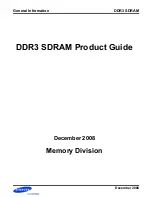
P440 Data Sheet / User Guide
DRAFT
51
Fig. 34: Fresnel cancellation at 100 m can limit performance. If the SNR required to operate
was 23 dB as shown by the black line, then the radio will work out to 210 m but not between 90
and 120 m.
When operating long distance one must take Fresnel into consideration. If the operating environment
is such that Fresnel is neither a help nor a hindrance, then the operating range will be set using free
space propagation. If Fresnel is both a help and a hindrance, then the maximum operating distance
should be determined by the Fresnel enhancement, assuming that the Fresnel cancellation is not so
deep as to cause a problem.
The magnitude of the ambient RF noise can also be a limiting factor. In
Figure 34
, the blue line is a
measurement of the magnitude of the noise as a function of receiver location. If the ambient RF noise
were 9 dB higher than shown, then the received SNR would be 9 dB lower. In this case, the
maximum range of the link operated in
Figure 34
would be 200 meters and there would be a
coverage gap between 90 and 120 meters. Ambient noise can be increased by an exceptionally strong
out-of-band transmitter or other transmitters operating in the P440’s operating band.
Assuming that ambient noise is not a factor, and there are no other factors in play, then a standard
P440 with a standard Broadspec antenna should operate as shown in
Table 4.
Two performance
columns are shown, one for Free Space and the second for Open Field. The difference between the
two reflects that fact that the Open Field performance benefits from Fresnel constructive interference
caused by the ground reflection. The Free Space performance would be expected if the ground
reflection were not a factor. Examples include operation between two drones well above the ground
and operation at short range (<70 m) where the Fresnel benefit is not significant.
This data for the Free Space calculation was taken with the units placed at 1 meter separation, in a
low noise environment, with fixed attenuators inserted to provide loss associated with distance. Max
Range in this case means the maximum range at which >98% of the range requests completed
successfully. At longer ranges, the range request success rate will drop. If a 50% success rate can be
tolerated, then the maximum ranges can be extended by about 20%. The Open Field data was taken
experimentally with actual P440s operating in an actual open field.













































